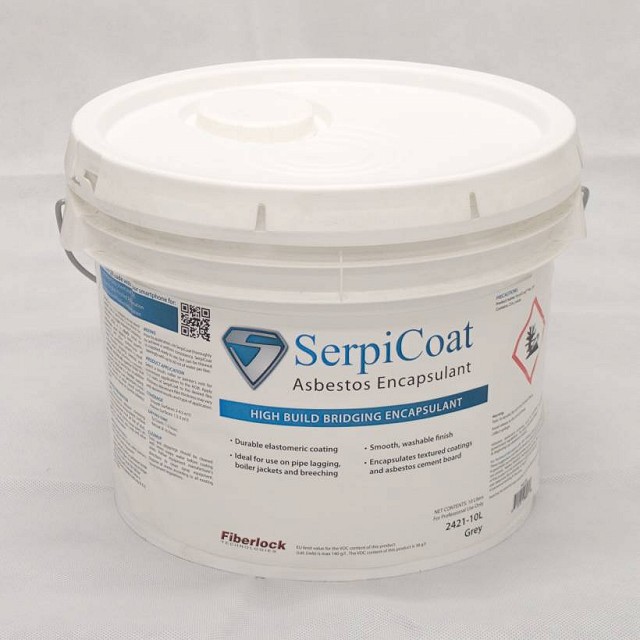
Not sure what the word encapsulation means? It’s a term that can be defined by an impervious material being applied on to an asbestos containing material (ACM) in order to prevent the release of asbestos fibres.
Definition
“For the purposes of this guidance, encapsulation can be defined as the application of an impervious material, which is secured over or around an ACM, and is designed to prevent the release of fibres under foreseeable conditions, such as vibration, impact and age degradation. Encapsulation should maintain the beneficial properties of the original asbestos application and maintain it in a safe condition.” ARCA, ‘GN010-V0715-Encapsulation of Asbestos Containing Materials’, 2015
Why would you encapsulate asbestos rather than remove it?
Encapsulation is appropriate only if the ACM is in good condition, and it is essential that proper encapsulation is achieved meaning that no water penetration may occur. This process should maintain the original asbestos application in order to avoid the need for replacement (e.g. fire resistant).
Encapsulation can take a variety of forms, but it is essentially the safe management and control of the material in order for it to not deteriorate in condition. In some cases, it is not necessary to remove the material and doing so could have an increased risk of fibre release.
Upsides of encapsulation
A common factor to consider is cost. Encapsulating is a short-term solution that will take less time in specialised labour to carry out and also the cost of waste disposal at landfill is not apparent. Overall, it will cost less initially and cause little disruption, so this can be appealing in a place of work if businesses need to continue to be fully operational or do not have a large budget.
Downsides of encapsulation
The negative side of encapsulation is it needs to be regularly checked by a surveyor to ensure the condition has not worsened, and the removal will eventually need to take place so over time the costs may be more overall. If anything happens after encapsulation that is not planned for, for example a roof leak causes asbestos containing ceiling tiles to become damaged, then you may again incur additional costs in the future with emergency action needed.
Not sure what to do?
Don’t worry, our experts will always be able to advise what is best for your particular situation and weigh up the pros and cons. We are also able to provide two quotes (where appropriate) when both options may be considered.

ET150 Encapsulation Paint is a commonly used product to encapsulate asbestos
Examples of encapsulation
- By use of board or sheeting, to create a physical barrier around the asbestos. This would then be painted with domestic paint (Mechanical Encapsulation)
- A liquid encapsulant is applied in several layers, for insulation, boards, sprayed coatings (such as ET150 paint). Sometimes a reinforcing membrane such as calico cloth is added to provide impact resistance. This can provide up to 20 years of life if undisturbed. (High Build Elastometric Coating)
- Water based Epoxy resins are used to provide high impact resistance and an easily cleanable surface






